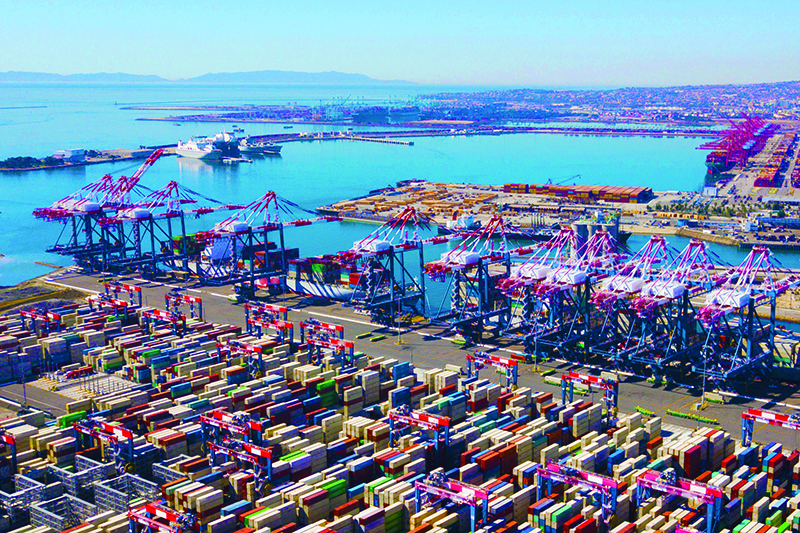[ad_1]
Port of Los Angeles Executive Director Gene Seroka is offering a simple message for shippers seeking capacity due to increased congestion at East Coast and Gulf ports: “Our terminals have capacity.”
In a year-over-year comparison, July’s figures reflect a a growth rate of 184.7% for intermodal cargo and 35.8% for dry and refrigerated cargo,
“Our terminals have capacity. For cargo owners looking
to re-chart their course, come to Los Angeles. We’re ready to help.”
— Gene Seroka
The Port of Los Angeles processed an estimated 935,345 Twenty-Foot Equivalent Units (TEUs) in July, outpacing the previous record set in 2019 by 2.5%. The Port has set monthly records in five of seven months in 2022.
“Remarkably, we continue to move record amounts of cargo while working down the backlog of ships almost 90%, a huge accomplishment by all of our partners,” Seroka said at news briefing.
As an example of port capacity elsewhere, the Alabama Port Authority said that July was its busiest month ever for containerized cargo at the Port of Mobile. It broke 50,000 TEUs for the first time since container port operations began in 2008. It is on track to surpass 500,000 TEUs this year, Alabama officials said.
But diversion of port traffic elsewhere seems to have spurred California ports to operate more efficiently.
“Even with the current rail challenges, our marine terminals are more fluid than last year,” said Seroka. He said that was due in part to a port optimizer data portal that allows stakeholders to “see around corners” and tackle problems before they arise.
The port’s cargo numbers have kept pace with 2021, its busiest year on record, with 6.35 million TEUs to date, Seroka said. The port director noted, however, that he expects imports to ease this month.
Imports rose 3.5% year over year to 485,472 TEUs, Seroka said. The port handled 103,497 TEUs of exports, a 13.5% increase from July 2021. Heightened levels of empty containers continue to be repositioned to Asia for the next wave of imports, resulting in a 5% increase in empties.
Seroka noted that the Southern California supply chain landscape has improved, especially vis-à-vis other crowded ports nationally. He said ships are not waiting for space as at many other ports around the country.
“Our terminals have capacity,” Seroka added. “For cargo owners looking to re-chart their course, come to Los Angeles. We’re ready to help.”
In July, loaded imports reached an estimated 485,472 TEUs compared to the previous year. That’s an increase of 3.4%, and 8% higher than the previous five-year June average, port officials said.
The U.S.’s largest container port has reduced the lengthy, 109-ship queue to enter its terminals by 88%. In July, there was just over a dozen vessels in line.
“Thanks to the efforts of so many, the supply chain landscape in Southern California has greatly improved,” Seroka said.
The Port of Los Angeles is the busiest seaport in the Western Hemisphere. It has been ranked No. 1 container port in the United States for 22 consecutive years. In 2021, the Port facilitated $294 billion in trade and handled a total of 10.7 million container units, the busiest calendar year in the port’s 115-year history.
About the Author

John D. Schulz
John D. Schulz has been a transportation journalist for more than 20 years, specializing in the trucking industry. John is on a first-name basis with scores of top-level trucking executives who are able to give shippers their latest insights on the industry on a regular basis.
[ad_2]
Source link








